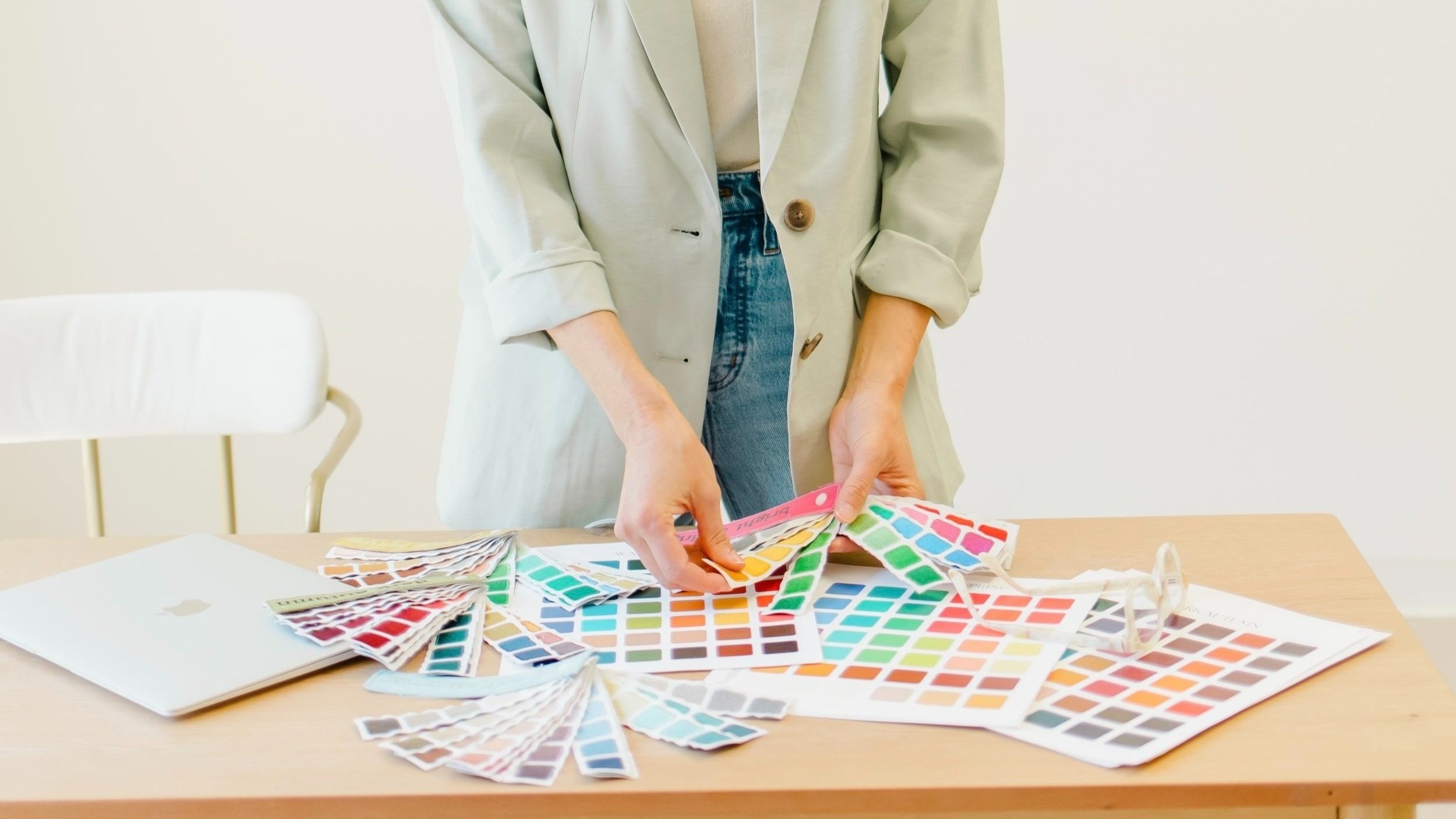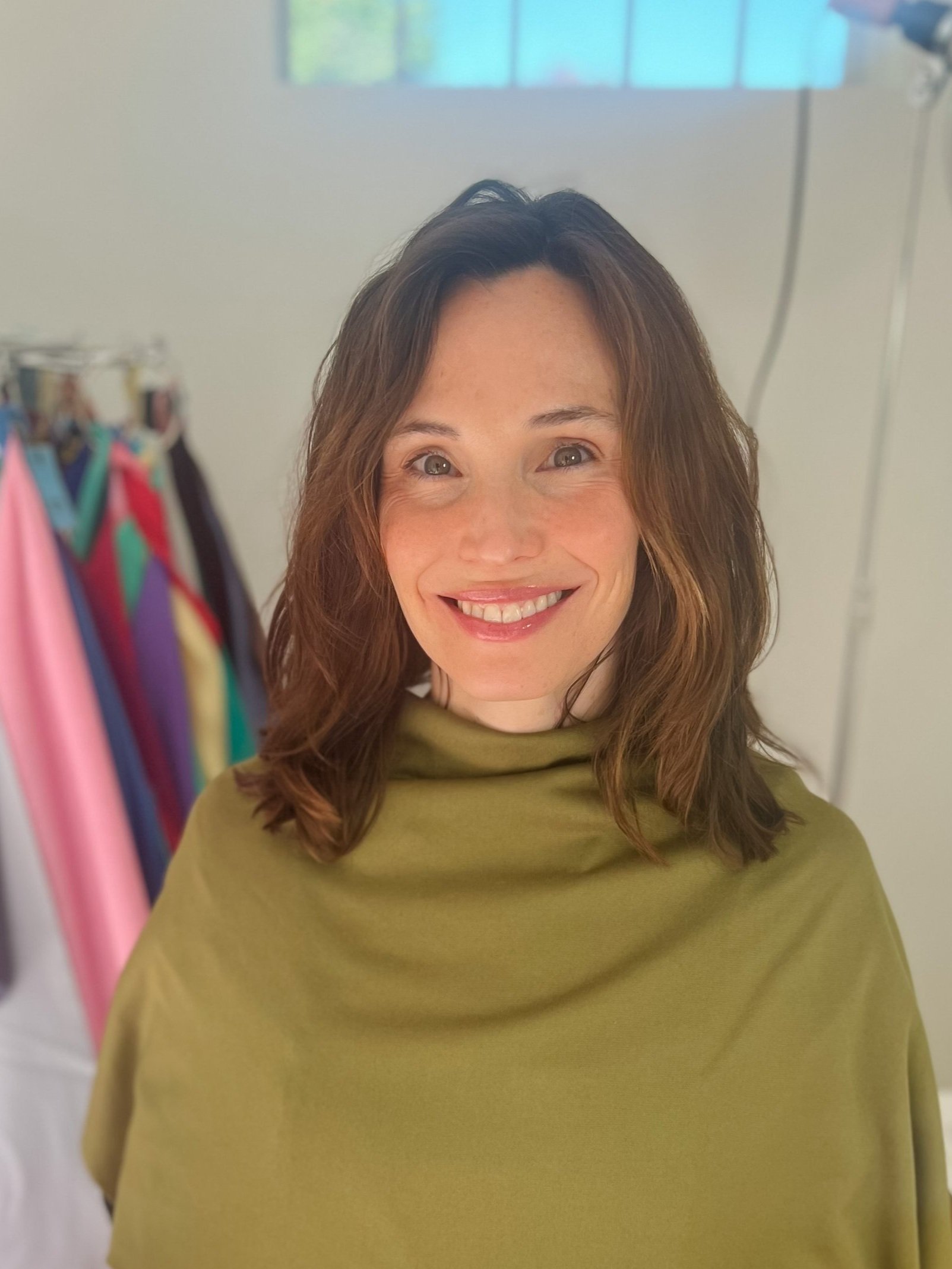Dark | Deep Autumn: The Complete Guide
The Dark | Deep Autumn color palette is characterized by its darker, spicy, and vivid tones. The defining feature of the Dark Autumn palette is its depth, which perfectly complements those with darker, more contrasted personal coloring. Enjoy this comprehensive guide which covers examples of Dark Autumns, outfit ideas, make-up, hair, denim, jewelry, and more!
Are you a Dark Autumn?
To determine if you are a Dark Autumn, observe the following characteristics when you look in the mirror:
Darker Features: Your hair tends to be deep and rich in tone, often darker than medium brown, such as deep browns or black.
High Contrast: There is a noticeable contrast between your hair, eyes, and skin tone. For example, your hair and eyes may be significantly darker than your skin.
Hair: deep brown, chestnut, dark auburn
Skin: warm/neutral undertones
Eyes: olive green, golden brown, dark brown, hazel
Dark Autumn Examples
Here’s a selection of Dark Autumn examples with their natural hair color from my in-person color analysis consultations.
Were you analyzed correctly?
To ensure you were correctly identified as a Dark Autumn, here are some helpful tips to verify your results.
Photo Comparison: Do you resemble the Dark Autumn clients in the photos above and the description?
Gold vs. Silver: Dark Autumn is 100% gold. When you hold silver against your skin, does it seem to stand out in a way that feels off or less flattering?
Compliments: Do you often receive compliments when wearing Dark Autumn colors?
Autumn Colors: Do you notice when you wear Soft Autumn colors, they wash you out? Or if you try Warm Autumn colors like mustard yellow or tomato red, they overwhelm you?
Dark Autumn colors are like the deep, intense hues of late autumn —think deep forest greens, dark chocolates, and rich burgundies. These shades are dark, warm, and full of depth, perfectly complementing the strong, striking features of a Dark Autumn complexion. Unlike the warmth of Warm Autumn or the gentler tones of Soft Autumn, Dark Autumn’s palette is spicy and vivid, offering a powerful yet harmonious look.
Want a free Dark Autumn color palette to save to your phone? Click below!
Color Dimensions
Dark Autumn colors have these characteristics:
Hue: Dark Autumn colors lean warm, but not overly so. This means they have more warm than cool undertones.
Value: Most of the colors in the Dark Autumn palette are dark and rich, reflecting the season's primary color characteristic. However, there are also some lighter and medium tones such as light peach and coral to help create contrast in your outfits.
Chroma: The colors have a balanced intensity—they aren't too muted or too bright. Their richness comes from their warm undertones, giving them a deep, full appearance.
Dark Autumn and Warm Autumn are both part of the Autumn palette, but they have distinct characteristics.
Dark Autumn: Features deeper, darker colors such dark plums, dark forest greens, and curry yellow. The palette is characterized by its darker, more dramatic warmth and high contrast.
Warm Autumn: Showcases rich, warm hues like deep golden browns, mustard yellows, and warm tomato reds. This palette exudes a bold warmth.
To determine if you’re a Dark Autumn Vs. Warm Autumn, consider the following:
Warm Autumn: If your natural coloring has medium contrast and embraces bold warmth, you’re likely a Warm Autumn.
Dark Autumn: If your coloring features more high contrast with darker hair tones, you may be a Dark Autumn.
Dark Autumn and Dark Winter share deep, intense tones, but each has its own unique qualities.
Dark Autumn: This palette features rich, earthy hues like dark plums, deep forest greens, and curry yellows. It combines warmth with a strong depth, creating a dramatic, yet natural look.
Dark Winter: While equally deep, Dark Winter leans toward cooler tones like deep blues, icy purples, and charcoals, offering a more stark contrast and a cooler, crisper feel compared to Dark Autumn’s warmer, earthier shades.
To determine whether you’re a Dark Autumn or Dark Winter, consider these key differences:
Dark Autumn: If your natural coloring shows deeper, earthy tones with a blend of rich warmth and contrast, you’re likely a Dark Autumn.
Dark Winter: If your coloring features high contrast with darker, cooler shades, and you find yourself feeling great in colors like deep blues and icy purples, you might be a Dark Winter.
Discovered you’re a Dark Autumn and ready to shop?
Colorbook offers a unique real-time shopping experience tailored to your color season and style. Enjoy a fun and easy way to create your perfect Dark Autumn wardrobe!
Beautiful neutrals
Perfect neutral colors include Warm Beige, Eggshell, Camel, Dark Brown, Soft Black (green tint), Navy, Marine Navy, Espresso, and Charcoal.
Neutrals to avoid
Stay away from light and cool neutrals, like light gray and bright white, as they can contrast too sharply with the deeper, warmer tones of your Dark Autumn palette.






Choose dark and rich denim
Opt for deeper, rich shades of denim. These richer tones complement Dark Autumn colors, adding depth and warmth to your look.
Avoid light denim
Light denim can detract from the dark, warm tones of the Dark Autumn palette. Instead, stick to darker, more intense hues to enhance the overall warmth and depth of your outfit.
Here are some stylish ways to showcase your color palette while keeping your look natural and balanced:
Neutral + accent
Combine a neutral with any of your Dark Autumn colors. For example, pair dark brown with curry yellow.
Denim + color
Choose medium to dark denim and pair it with any of your Dark Autumn colors.
High contrast
Pair dark colors with lighter shades to achieve a striking contrast. For example, combine dark brown with light peach or dark olive green with eggshell white. Just make sure to use the darker color as the main focus of your outfit, and keep the lighter color as an accent or detail.
Dark Autumn makeup embraces dark and warm tones that beautifully enhance your natural glow. Look for colors like rust, deep burgundy, rich plum, wine, deep brick red, paprika, or cinnamon. Click here for a full list of Dark Autumn makeup recommendations, including blush, lipstick, eyeshadows, and mascara suggestions to complement your coloring.
Here’s a guide to help you choose the best metals, stones, and other accessories to complement your Dark Autumn palette.
Metals & Jewelry
Embracing the Dark Autumn palette extends to the choice of metals, where gold, copper, bronze, and brass reign supreme. These metals harmonize seamlessly with dark, rich tones.
Stones
Choose gemstones with deep, rich hues like garnet, amber, topaz, jade, coral, jasper, peridot, citrine, and turquoise. These stones will enhance the rich tones of Dark Autumn and add a warm, harmonious touch to your look.
Other Ideas
Wood and other natural materials are perfect for Dark Autumns, as they resonate with the season’s earthy, organic vibe.
What to Avoid
Bright, shiny metals and overly sparkly bling can overwhelm your coloring and detract from your natural beauty.
For Dark Autumns, the primary color aspects are dark and warmth, so light and cool colors are less flattering.
Cool & Muted Colors:
White, pastels, and muted tones like dusty blues and pinks can make your naturally rich coloring appear washed out. Cool, frosty colors, such as intense pinks and bluish grays, will also clash with your warm undertones.
Here’s the hair advice I share with my Dark Autumn clients, along with examples of their natural hair below.
Embrace Your Natural Color
Your natural hair color is perfectly suited to your Dark Autumn palette! Embrace its natural beauty as it will harmonize beautifully with your colors.
Opt for Dark & Warm Hues
For your hair color, it's best to embrace your natural darker hair tones and avoid highlights. Introducing highlights can make you appear washed out. If you do decide to color your hair, opt for warm and dark tones that softly blend with your natural hair color.






These photos of Dark Autumn gray hair showcase the dark and warm gray often seen in those with warmer undertones. This client looks stunning in their Dark Autumn colors, offering the perfect inspiration for embracing gray hair with confidence!
When adding patterns and prints to your Dark Autumn wardrobe, consider these tips to ensure they complement your natural coloring:
Suggested Patterns
Choose patterns that prominently feature Dark Autumn colors, focusing on deep, rich tones.
Look for patterns with a significant depth and intensity to match your darker color palette.
Patterns to Avoid
Avoid light patterns and overly bright designs, as they can clash with your deep, rich coloring.




What is the difference between the Autumn seasons?
Whether you’ve been told you’re an Autumn in a color analysis or you’re just curious if you might be, I’m excited to share a unique collage showcasing Soft Autumn, Warm (True) Autumn, and Dark (Deep) Autumn. These real-life examples from my in-person consultations will help you see the distinct patterns and personal coloring for each Autumn type. Dive into these vibrant photo collages to find out where you fit best and embrace your Autumn palette with confidence!

Join the list!
Get curated color inspiration, seasonal lookbooks, and expert tips sent straight to your inbox. Sign up for our free newsletter and start feeling inspired today!



































